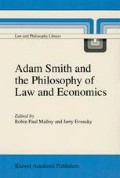Abstract
An analysis of the energy consumption and the associated emissions for power plants and road traffic is presented for West Germany as a typical highly industrialized country. While the former is the sector of highest energy consumption and CO2 emission, the latter shows the highest emissions with respect to NOX, CO and volatile organic compounds (VOC). Both sectors, each being prominent in its own way, are analyzed with respect to the underlying technical principles of the present technology in comparison to a potential future use of fuel cell systems. The energy consumption and emission levels of fuel cells in stationary electricity production in power plants and in vehicle application in road traffic is compared with the corresponding conventional systems. Conclusions for the future technological development can be drawn from the results of the presented analysis.
Access this chapter
Tax calculation will be finalised at checkout
Purchases are for personal use only
Preview
Unable to display preview. Download preview PDF.
References
Bundesministerium für Umwelt, Naturschutz und Reaktorsicherheit, “Umweltpolitik, Klimaschutz in Deutschland”, Bonn (1993).
C. D. Schönwiese, B. Diekmann, “Der Treibhauseffekt — Der Mensch ändert das Klima”, Rowohlt, Reinbek(1991).
Bundesminister für Verkehr (Ed.), “Verkehr in Zahlen 1993”, DIW, Berlin (1993).
D. Bohn, Fortschrittliche Energieumwandlungskonzepte im Hinblick auf CO2-und NOx-Minderung und Vermeidung, Lecture WS 1992/1993, RWTH Aachen (1993).
H. Knappstein, H. Nymoen, Blockheizkraftwerke mit Brennstoffzellen — Energieerzeugung der Zukunft, GASWÄRME Int. 42 (1993) p. 139–144.
G. Haupt, J. S. Joyce, GUD-Technik nutzt Gas, Öl und Kohle extrem schadstoffarm, SIEMENS Power Journal 3 (1993) p. 31–35.
W. Suttor (Ed.), “Praxis Kraft-Wärme-Kopplung”, C.F. Müller, Karlsruhe (1993).
Ch. Rechenauer, E. Achenbach, “Dreidimensionale mathematische Modellierung des stationären und instationären Verhaltens oxidkeramischer Hochtemperaturbrennstoffzellen”, Jül-2752, Jülich (1993).
E. Riensche, H. Fedders, “Modellrechnungen zu Systemvarianten von 200 kW-SOFC-Anlagen”, Jül-2787, Jülich (1993).
S. C. Singhai, Solid Oxide Fuel Cell Development at Westinghouse, Second International Symposium on Solid Oxide Fuel Cells, Athens, Greece (1991).
H. Wendt, V. Plzak, Brennstoffzellen — eine Einführung, in: VDI Berichte Nr. 912, VDI Verlag, Düsseldorf, (1992) p. 89–102.
J. Reinecke, G. Huppmann, W. Drenkhahn, Brennstoffzellenkraftwerke zur Verstromung von Wasserstoff aus fossilen Rohstoffen und anderen Quellen, VDI Berichte 912 (1992) p. 103–124.
R. F. Singer, Solid Oxide Fuel Cell Development, Internal Report, Asea Brown Boveri AG, Corporate Rersearch Heidelberg, Germany (1990).
H. Fedders, E. Riensche, Process Engineering Problems of Peripheral Components of Natural-Gas-Fuelled SOFC Plants, Second International Symposium on Solid Oxide Fuel Cells, Athens, Greece (1991).
W. Drenckhahn, K. Hassmann, Brennstoffzellen als Energiewandler, Energiewirtschaftliche Tagesfragen 43 (1993) p. 382–389.
K. Ledjeff, Batterien für Elektrofahrzeuge im Vergleich, Aspekte alternativer Energieträger für Fahrzeugantriebe, in: “VDI-Berichte 1020”, VDI-Verlag, Düsseldorf (1992) p. 315–340.
K. Strasser, Development of PEM Fuel Cells at Siemens: Status and Potential Applications, International Society of Electrochemistry, Berlin (1993).
U. Stimming, J. Divisek, B. Höhlein, V.M. Schmidt, J. Stumper, Neuere Entwicklungen bei Brennstoffzellen, in: “Deutsche Physikalische Gesellschaft, Arbeitskreis Energie”, H. Unger (Ed.), Bad Honneff (1993)p. 141-170.
H. Heitland, G. Rinne und K. Wislocki, K., Chancen hybrider Antriebssysteme im zukünftigen Straßenverkehr, Motortechnische Zeitschrift 55 (1994) p. 94–101.
Volvo, Weltpremiere: Das Zukunftsauto von Volvo, Press Release, Volvo Deutschland GmbH, Dietzenbach-Steinberg (1993).
O. von Fersen, Concept Car präsentiert sich als Saubermann, VDI-Nachrichten, Nr. 11 (1993) p. 27.
B. Ganser, “Verfahrensanalyse: Wasserstoff aus Methanol und dessen Einsatz in Brennstoffzellen für Fahrzeugantriebe”, Jül-2748, Jülich (1993).
B. Höhlein, B. Ganser, R. Juffernbruch, R. Kolke,(Jülich), S. Birkle, H. Voigt, (Erlangen), Energieumwandlungsketten für den Straßenverkehr im Vergleich, Energiewirtschaftliche Tagesfragen 43 (1993) p. 828–835.
J.B. Hansen, and K. Aasberg-Petersen, (Haldor-Topsoe A/S, Lyngby, Denmark), B. Höhlein (Forschungszentrum Jülich, Jülich, Germany), Fuel processing for mobile fuel cell application, in: “Fuel Cells For Tractionary Applications”, Symposium at the Royal Swedish Academy of Engineering Sciences, Stockholm, Sweden (1994).
Author information
Authors and Affiliations
Editor information
Editors and Affiliations
Rights and permissions
Copyright information
© 1995 Springer Science+Business Media New York
About this chapter
Cite this chapter
Biedermann, P., Höhlein, B. (1995). On the Environmental Impact of Energy Conversion Systems. In: Lapicque, F., Storck, A., Wragg, A.A. (eds) Electrochemical Engineering and Energy. Springer, Boston, MA. https://doi.org/10.1007/978-1-4615-2514-1_1
Download citation
DOI: https://doi.org/10.1007/978-1-4615-2514-1_1
Publisher Name: Springer, Boston, MA
Print ISBN: 978-1-4613-6070-4
Online ISBN: 978-1-4615-2514-1
eBook Packages: Springer Book Archive

